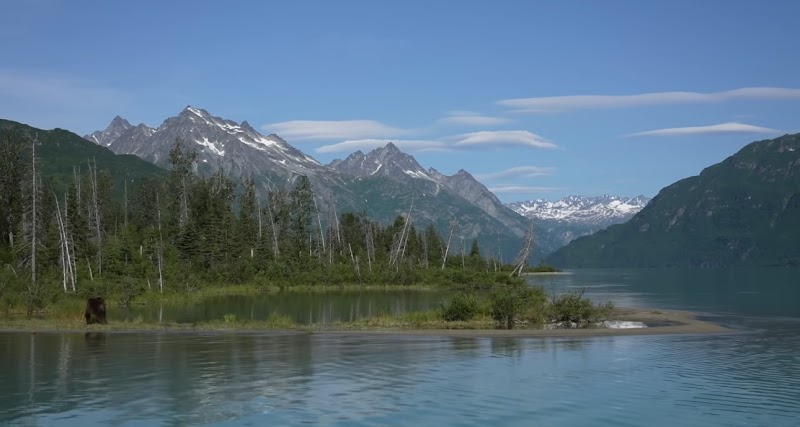
Into the Wild Skies: Bush Plane Adventures to Spot Grizzlies and Discover Lake Clark’s Untamed Beauty
Experience the thrill of a bush plane ride into Alaska’s Lake Clark, where grizzlies roam and untouched wilderness unfolds. This guide blends vivid adventure with practical tips to help you plan a safe, unforgettable journey into one of America’s last great wild places.
Book Flights Early
Bush plane seats are limited and popular in peak seasons; secure your flight in advance to avoid timing conflicts.
Wear Waterproof Boots
Terrain ranges from wet muskeg to rocky shores—waterproof boots prevent cold feet and improve traction.
Bring Bear Safety Equipment
Carry bear spray and learn proper safety protocols; maintaining distance is critical when in grizzly country.
Pack Layered Clothing
Variable weather calls for base layers, waterproof shells, and insulation to adjust quickly to temperature swings.
Into the Wild Skies: Bush Plane Adventures to Spot Grizzlies and Discover Lake Clark’s Untamed Beauty
Port Alsworth, Alaska, awakens with the roar of twin-engine bush planes slicing through the crisp morning air. Here, beyond the beaten trails and accessible roads, lies Lake Clark—an expanse of wilderness fiercely itself. Taking a bush plane out from this remote village isn’t just a ride; it’s a passage into a living landscape where grizzly bears roam freely, rivers push forward over rugged terrain, and mountains patiently hold their ancient watch.
The flight alone demands attention. As you lift off from the small airstrip, vast stretches of dense spruce forests unfold beneath you, interrupted only by shimmering ribbons of glacial rivers daring you to follow. The plane banks gently, skimming the water’s edge, offering rare vantage points over Lake Clark’s glassy surface, where eagles wheel and fish leap.
Landing on a prepared floatplane strip or remote gravel bar begins your real expedition. On the ground, the terrain is a mix of boreal forests and muskeg, requiring sturdy, waterproof footwear. Trails are informal and undulating, with elevation gains rarely extreme but enough to remind you that nature here plays by its own rules.
The bears—grizzlies bold and curious—command respect. Observing them from a safe distance, either by guided boat or from elevated viewpoints, reveals behaviors both graceful and raw. Patience pays off; the bears often move deliberately through berry patches or across riverbanks, undisturbed by your presence when protocols are followed.
Timing is critical. Early summer brings salmon runs and amber-lit nights, while fall flaunts vivid foliage and the frantic rush of bears fattening for winter. Hydration and layered clothing guard against sudden weather shifts—Lake Clark’s air cools quickly as shadows grow long.
Preparation extends to gear and guides. Experienced pilots and local outfitters ensure safe passage, enhancing both enjoyment and security. Every moment here orders a blend of vigilance and wonder—a dance with an environment that refuses easy domination.
Whether you’re a seasoned adventurer or a first-time visitor, taking a bush plane to Lake Clark offers an unfiltered encounter with Alaska’s wild heart. This is a trip measured not in miles alone but in moments of connection—the ripple of water, the brush of wind, the unmistakable silhouette of a grizzly against alpine light. Ready your boots, check your maps, and step into a journey both practical and profound.
Nearby Trips
All Adventures
Boat Charters
Water Activities
Adventures near Port Alsworth, Alaska
Discover the unique and memorable adventures that make Port Alsworth, Alaska special.
Frequently Asked Questions
How do I book a bush plane to Lake Clark from Port Alsworth?
Several local air services operate scheduled and charter flights from Port Alsworth airport. Booking in advance through operators like Lake Clark Air or Talon Air ensures availability, especially during peak seasons.
What is the best way to safely view grizzly bears in the area?
Observing bears from a guided boat tour or designated high ground provides safe vantage points. Always maintain a significant distance, follow guides’ instructions, and carry bear spray for emergencies.
Are there marked hiking trails around Lake Clark?
Formal trails are limited; hikers usually navigate natural terrain using maps or GPS. This environment demands careful route planning and readiness for wet, uneven surfaces.
What wildlife might I see besides grizzlies?
Expect to see bald eagles, moose, salmon during runs, Dall sheep in higher elevations, and a variety of migratory birds throughout the seasons.
When is the best time to visit for photography?
Early mornings and late afternoons during summer and fall offer optimal lighting and active wildlife, with vibrant colors and softer shadows enhancing photo opportunities.
What environmental precautions should visitors take?
Leave no trace principles are vital: pack out all waste, avoid disturbing wildlife, respect remote habitats, and use established landing spots to minimize impact.
Recommended Gear
Waterproof Hiking Boots
Protects feet while navigating wet muskeg and uneven shorelines.
Bear Spray
Crucial for safety when encountering grizzly bears in their territory.
Layered Clothing
Allows adjustment to fluctuating temperatures and weather during outdoor excursions.
Binoculars
Enhances distant wildlife and landscape viewing without disturbing habitats.
Local Insights
Hidden Gems
- "Hidden hot springs near Chinitna Bay offering warm relief after flights."
- "Secluded viewpoints on Twin Lakes providing panoramic views of the volcanic peaks."
- "Quiet gravel bars along the lake’s edge preferred by local anglers."
Wildlife
- "Brown bears foraging along riverbanks at dawn."
- "Rare sightings of lynx amid dense forest patches."
- "Salmon congregations that dictate bear behavior."
History
"The area is rich with indigenous history from the Dena’ina Athabascan people, whose seasonal camps and subsistence hunting have shaped the cultural landscape for millennia."
